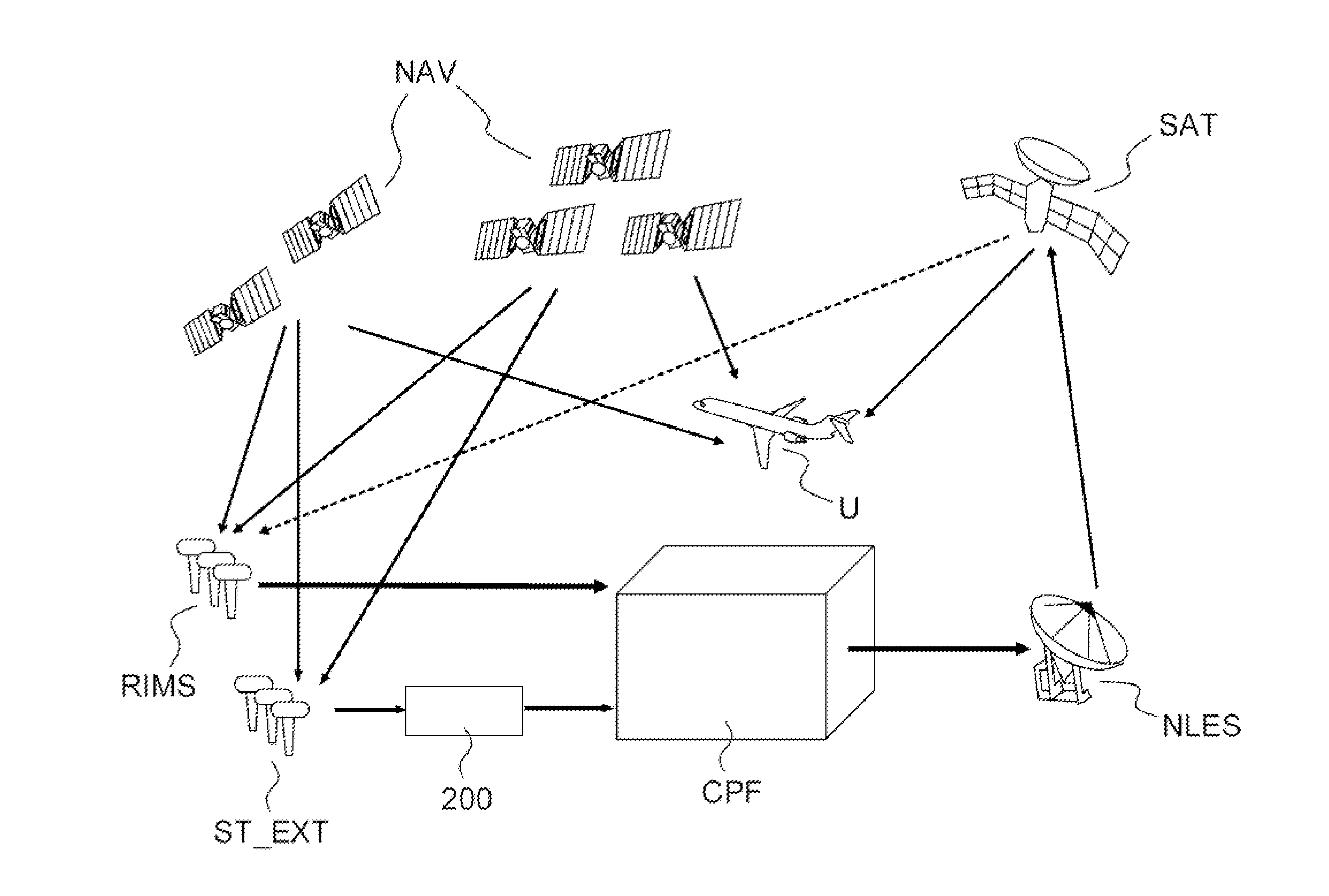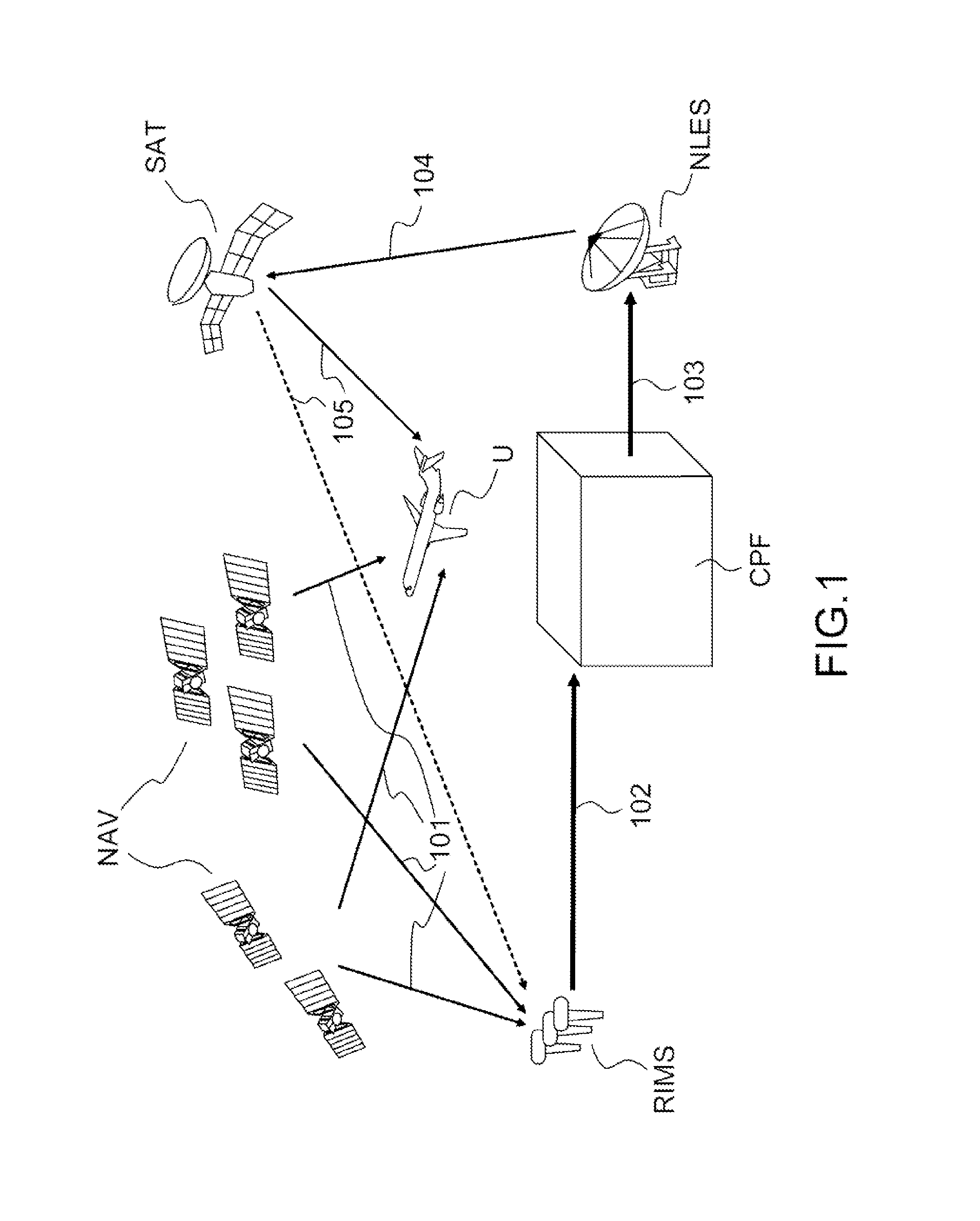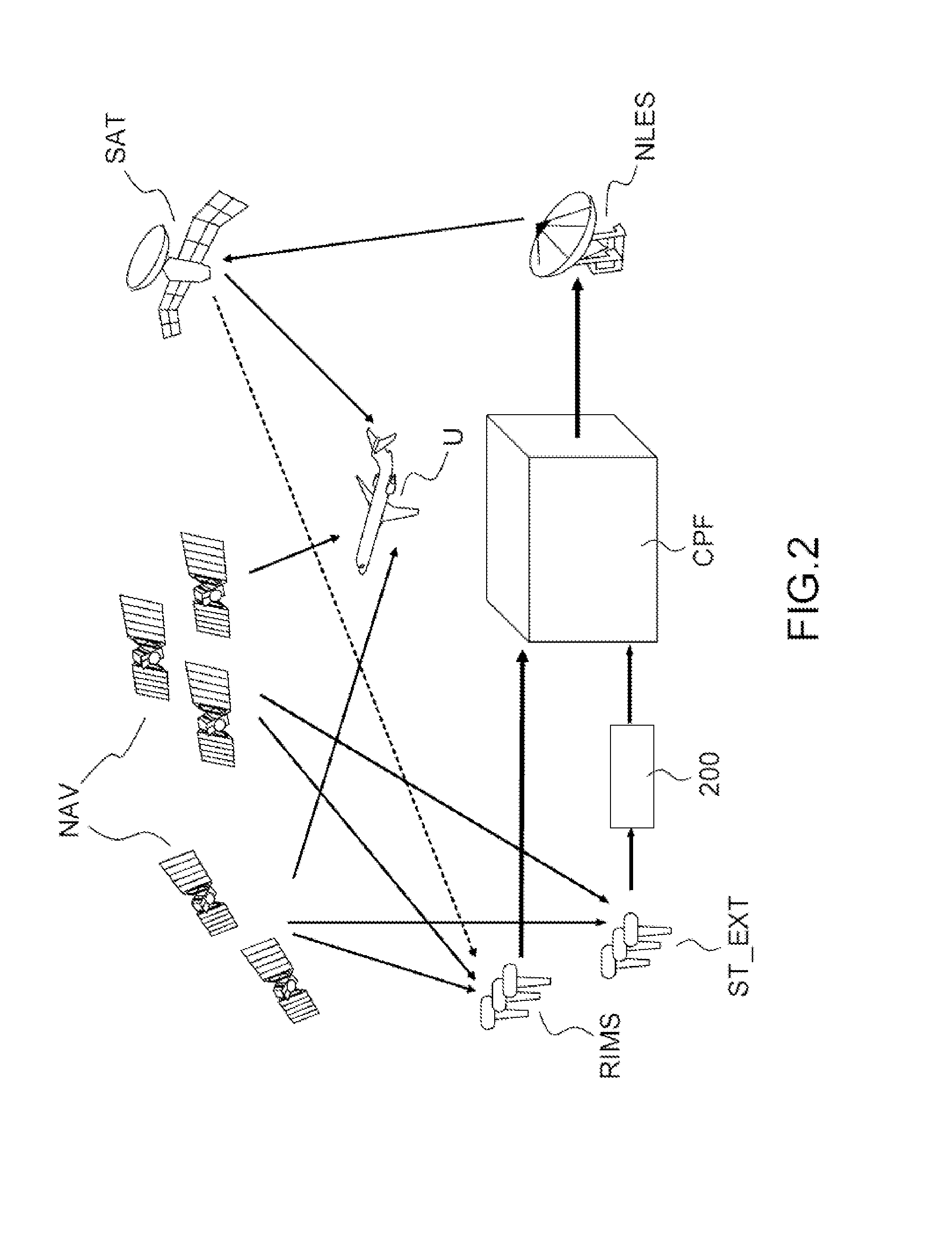Method of monitoring the integrity of radio-navigation stations in a satellite based augmentation system
a satellite-based augmentation and radio-navigation technology, applied in satellite radio beaconing, measurement devices, instruments, etc., can solve the problems of limited number of observation stations, limited availability, and direct impact of system performance of observation stations
- Summary
- Abstract
- Description
- Claims
- Application Information
AI Technical Summary
Benefits of technology
Problems solved by technology
Method used
Image
Examples
Embodiment Construction
[0041]FIG. 2 represents a diagram of an SBAS augmentation system adapted according to the invention. The elements common with the SBAS system according to the prior art represented in FIG. 1 are identified by the same references. In replacement for or as a supplement to the observation stations RIMS adapted to the SBAS system, a plurality of stations ST_EXT external to the SBAS system, whose positions are known, are integrated into the SBAS system according to the invention. The expression external stations is understood to mean receivers of radio-navigation signals which are not dedicated to a use within the framework of an SBAS augmentation system. The operation of such receivers is therefore not guaranteed and their reliability level is lower than that of the observation stations RIMS dedicated to a use at the core of an SBAS augmentation system. The external stations ST_EXT receive the radio-navigation signals emitted by one or more radio-navigation satellites NAV and transmit t...
PUM
 Login to View More
Login to View More Abstract
Description
Claims
Application Information
 Login to View More
Login to View More - R&D
- Intellectual Property
- Life Sciences
- Materials
- Tech Scout
- Unparalleled Data Quality
- Higher Quality Content
- 60% Fewer Hallucinations
Browse by: Latest US Patents, China's latest patents, Technical Efficacy Thesaurus, Application Domain, Technology Topic, Popular Technical Reports.
© 2025 PatSnap. All rights reserved.Legal|Privacy policy|Modern Slavery Act Transparency Statement|Sitemap|About US| Contact US: help@patsnap.com



